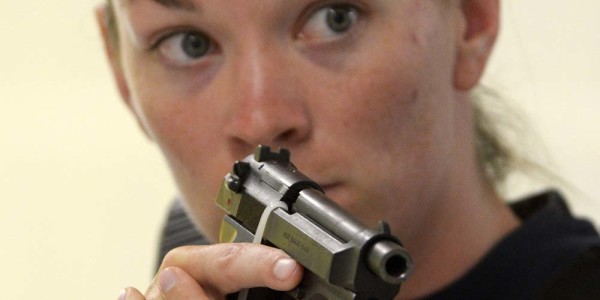

Editor’s note: Since the school shooting that killed 17 students and teachers two weeks ago in Parkland, Florida, a debate has erupted over whether to arm teachers and other staffers in schools to prevent future tragedies. Plenty of military veterans have weighed in on both sides, but few voices in the mainstream media have thought through what such a system would really look like. Here is one quick perspective on that, from a former Army officer.
So let’s go out on a limb together and assume for a second that arming teachers and staff in schools is a good idea, and will keep our children safer. This would be a bear of a project; as a business leader and former Army officer, I’m going to give it my best to spitball some of the logistical issues and day-to-day management concerns this program may have.
Protection for whom?
Let’s start with the “Where.” Will all schools be required to have protection? Or can private schools opt out? If there’s no opt-out, do we need a law to force requirement? And would that be an executive order, or a law passed through Congress?
Which geographies are more vulnerable to school shootings? Urban, suburban, or rural schools? And based on the threat array for those areas, are different “suites” of security required? Who will evaluate those requirements from year to year to make sure proper threats are met in each geographical area?
Protection with what gear and tactics?
Let’s do the “What” next. What type of armed security are we talking about? Visibly armed sentries, or plainclothes concealed-carry? What weapons will officers or staff use? Are we going pistols or shotguns, or do we match assault rifles against assault rifles? Will there be a standard platform, caliber, ammunition type, or magazine capacity? What’s appropriate for close quarters inside a school? We’ll need to plan for liability when these standards are breached.
What kind of training do we require, and who provides it? Do we lean on existing police standards? Or do we need stricter standards, because engagements will be inside schools near children? How often will staff train? How do we monitor proficiency or physical and mental readiness? What’s our recourse for staff that drop below these standards? We should be prepared for wrongful termination or discrimination suits if we suspend or fire someone who’s not adhering to standards. Would that require us to negotiate all-new contracts with the teachers’ unions?
What are the rules of engagement? Are there special considerations because incidents ultimately occur in schools near children? What are the shoot and no-shoot scenarios? Can staff engage if they don’t see a gun? Can staff engage only if they see a gun? Or only if that gun’s been fired? Are we prepared for bad-shoot scenarios like false identification of a shooter, death or injury from friendly fire, ricochets, crossfire, accidental discharges, or weapon malfunction?
In what scenarios are staff allowed to disengage? When they are are outnumbered or out-gunned? What are those ratios? If they are out of range, are staff obligated to close on the shooter? Is their duty first to engage and neutralize the shooter? Or protect wounded? Can staff leave wounded behind to engage an active shooter? We will undoubtedly need to form a review process to investigate whether proper protocols were used after an incident occurs.
Protection by whom?
Now the “Who.” Who do we choose for the job? How do we screen applicants? Are there physical and mental requirements, and where do we find those? Do we lean on typical military or law enforcement standards, or adapt unique standards for the mission of protecting children? We are not just selecting guards; these officers will be closely scrutinized by parents and students daily.
Are we prepared for liability from potential or perceived inappropriate contact with children? Or physical or psychological injury from students falsely engaged, contained, or detained as suspected shooters? We will need to be prepared for lawsuits from parents, and also from employees, stemming from these kinds of incidents.
Protection, overseen how?
Now let’s look at the big “How.” How do we administer this effort from top to bottom? Do we use an existing bureaucracy like the FBI or one of the other DHS agencies? Do we need to create a new federal oversight body, a School Security Agency, to handle the hiring, firing, monitoring, training, investigating, budgeting, reporting, procuring? And then who will provide oversight for all of those? Maybe a new select congressional subcommittee?
And last but not least, we are going to need a lot of insurance to cover every aspect of this program, from all the potential liabilities mentioned above and more. How much will that cost alone?
Looks like we’ll need a big chunk of government and lot of money to make this work.
James Eisenberg served as an artillery officer on active duty from 1996 to 2000, including tours with the 2nd Infantry Division in Korea as a howitzer platoon leader and battery XO, and with the 101st Airborne Division at Ft. Campbell as a company fire support officer and battalion fire direction officer. He graduated Ranger School with class 9-97. He currently runs a large property management and construction organization that employs over 300 people.
WATCH NEXT:
Want to read more from Task & Purpose? Sign up for our daily newsletter »
